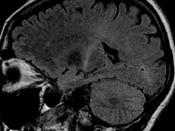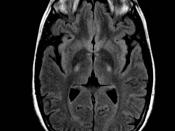AMYOTROPHIC LATERAL SCLEROSIS Amyotrophic lateral sclerosis, also known as ALS, Lou Gehrig's Disease, or Motor Neuron Disease, is a fatal neuromuscular disease that progressively weakens muscles and eventually results in paralysis. It attacks nerve cells in the brain and spinal cord and without messages being sent by the neurons to parts of the brain that control the muscles movement is impossible. Because muscles are no longer receiving signals to work, they start to waste away. This is known as atrophy, which makes limbs appear to be thinner.
Symptoms of ALS are similar to many other neuromuscular diseases, making it hard to diagnose quickly. Some symptoms are loss of muscle control and strength, falling or stumbling, difficulty speaking and breathing, muscle cramps or ticking, and chronic fatigue. With all of these symptoms and the imperative parts of the body that it does affect, ALS does not affect the mind, in the sense of thoughts, memories, and knowledge.
There are three types of ALS; the most common is sporadic, then familial and Guamian. Familial ALS, the hereditary kind, accounts for only 10% of all cases. Of all the familial cases, about 20% are a known genetic defect. The defect is a mutation of superoxide dimutase 1(SOD 1). Because of this percentage, it is obvious that other unidentified genetic cause exist.
ALS is one of the most common neuromuscular diseases worldwide. It affects people of both sexes and all races. In the United States, there are 30,000 people living with the disease. Everyday, 15 more people are diagnosed. Only 50% live longer than 18 months after diagnosis. Another 10% live longer than 10 years. This life expectancy can be greatly increased if the patient decides to go on a ventilator.
ALS patients usually die due to insuffient oxygen that has caused too...


